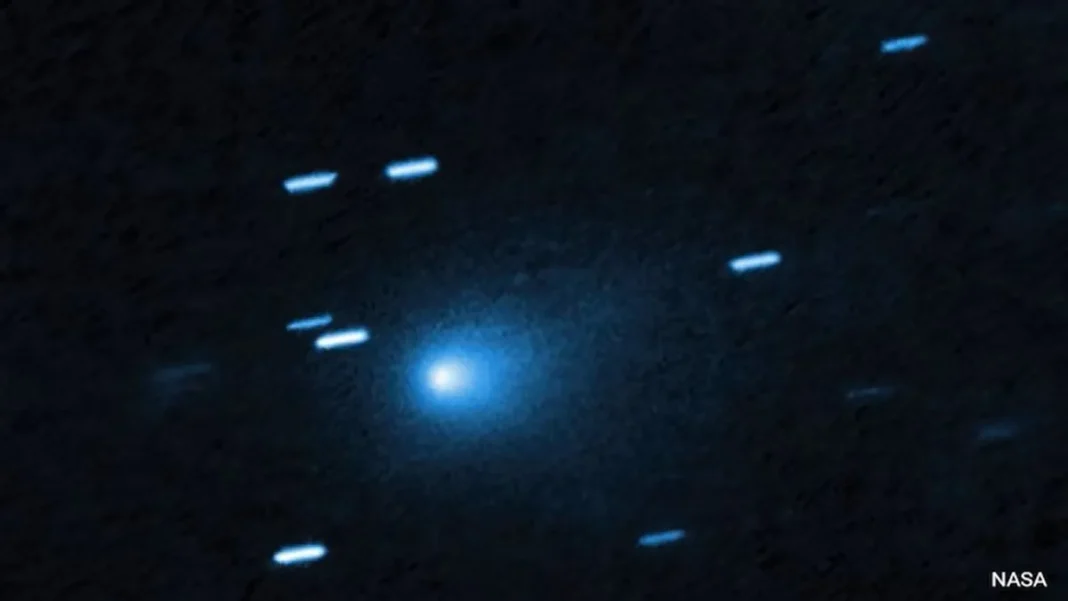Mysterious Interstellar Object Accelerates and Changes Colour
Astronomers worldwide are tracking 3I/ATLAS, a rare interstellar visitor that has unexpectedly accelerated and turned blue while journeying through our solar system. Discovered in July 2025, this marks only the third confirmed object from beyond our solar system, following ‘Oumuamua and Comet Borisov.
Key Observations
- Sudden speed increase to 244,600 km/h in late October
- Unexpected blue colour change observed on October 29
- No visible tail despite solar approach
- Closest Earth approach in December at safe 269 million km distance
Unexpected Acceleration
NASA’s Jet Propulsion Laboratory engineer Davide Farnocchia confirmed the object is experiencing “non-gravitational acceleration,” meaning something beyond the Sun’s gravity is propelling it forward. Harvard astrophysicist Avi Loeb suggested this could result from mass loss, with gases and dust expulsion acting like a natural engine.
“As it expels this material at a greater rate, it’s being kicked in the opposite direction,” Loeb wrote, estimating 3I/ATLAS could lose up to one-tenth of its mass monthly.
Path Deviation and Colour Mystery
Using Chile’s ALMA observatory, researchers detected a significant four-arcsecond deviation from the expected trajectory. Meanwhile, the object’s unusual blue colour contradicts typical comet behavior. Lowell Observatory’s Qicheng Zhang clarified the colour change occurred only once when the gas coma became visible, though amateur astronomers spotted the blue-green glow as early as September.
Artificial Origin Speculation
Loeb, known for considering artificial origins for interstellar objects, noted technological explanations can’t be entirely dismissed. “The non-gravitational acceleration might be the technological signature of an internal engine,” he stated, while acknowledging natural causes like ionised carbon monoxide remain more likely.
Missing Tail Puzzles Scientists
In another anomaly, 3I/ATLAS shows no visible tail despite its solar encounter. Loeb calculated approximately 13% of its mass should have formed a tail, calling the absence “unusual and puzzling.”
NASA and ESA will continue monitoring as the object heads toward Jupiter by March 2026. Future observations may determine whether its strange behavior stems from natural phenomena or something more extraordinary.
Name Explanation: 3I/ATLAS denotes the third interstellar object discovered, detected by Chile’s Asteroid Terrestrial-impact Last Alert System.




